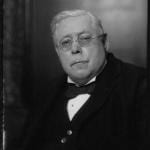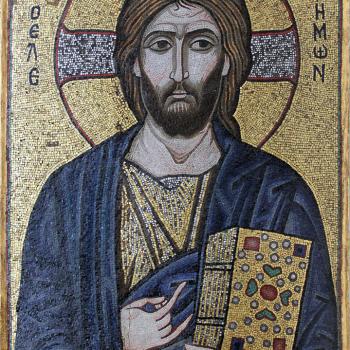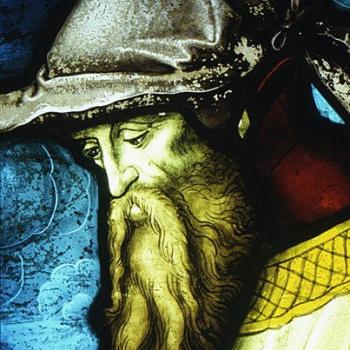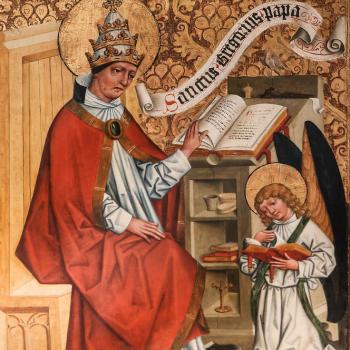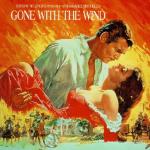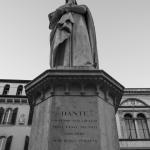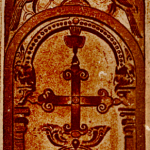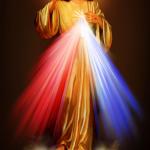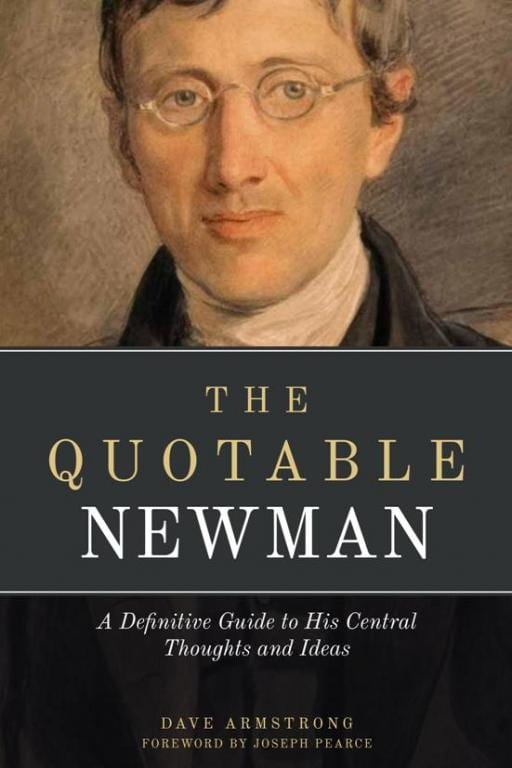
[see book and purchase information]
St. John Henry Cardinal Newman fully accepted (indeed, was pleased with) the decree on papal infallibility, defined at Vatican I (lest anyone would try to deny this, as many Protestants erroneously attempt to do). See my paper: John Henry Newman on Papal Infallibility Prior to 1870 (Classic Anti-Catholic Lies: George Salmon, James White, David T. King et al) [8-11-11].
There seems to be a lot of misconceptions and confusion about Ultramontanism. That strain of thought did indeed seem to be in a numerical majority at Vatican I (if we are talking about counting heads of bishops). At any rate, it was a powerful influence. The actual dogmatic decree on papal infallibility, however, was not Ultramontane at all. It was actually a defeat of Ultramontanism, and Newman himself stated as much. Despite this fact, the nature of the decree is often wrongly conflated to represent a manifestation of that which it actually opposed. Newman biographer Ian Ker describes the true relationship of Ultramontanism, the First Vatican Council, and Newman’s thought (blue emphasis added):
[I]n a letter of March 1870, . . . he pointed out that however infallible the Pope might turn out to be, his pronouncements would still require interpretation. The same was true of a Council’s definitions, which – just as ‘lawyers explain acts of Parliament’ – had to be explained by theologians. Obvious as the fact might be, the conclusion to be drawn from it had serious consequences for the fantasies of extreme Ultramontanism. ‘Hence, I have never been able to see myself that the ultimate decision rests with any but the general Catholic intelligence’ . . . (Later, in the Letter to the Duke of Norfolk, he was careful to emphasize that he simply meant that the whole Church ratified a definition as ‘authentic’, not that the ‘subsequent reception’ actually entered into the ‘necessary conditions’ of a dogmatic decision.) In the same private letter he also noted that abstract definitions could not ‘determine particular fact’: the doctrine, for example, that there was no salvation outside the Church did not apply to people in ‘invincible ignorance’ . . .
He continued to insist after the definition that ‘the voice of the Schola Theologorum, of the whole Church diffusive’ would ‘in time make itself heard’, and that ‘Catholic instincts and ideas’ would eventually ‘assimilate and harmonize’ it into the wider context of Catholic belief . . .
In defining doctrines, Popes and Councils enjoyed an ‘active infallibility’, but more was involved in the infallibility of the Church than that, since a ‘passive infallibility’ belonged to the whole Catholic people, who had to determine the force and meaning of these doctrinal definitions . . . (Ian Ker, John Henry Newman: A Biography, Oxford University Press, 1988, 681-682, citing Difficulties of Anglicans, II, 372; further references: The Letters and Diaries of John Henry Newman [LD], edited by Charles Stephen Dessain [London: 1961-1972], XXV, 71, 284, 447; XXVII, 338)
In his diary, Newman wrote in 1870, after the definition was passed (which he had opposed, as an “inopportunist”) that all Catholic theologians had always held:
. . . that what the Pope said ex cathedra, was true when the Bishops had received it – what has been passed, is to the effect that what he determines ex cathedra is true independently of the reception by the Bishops – but nothing has been passed as to what is meant by ‘ex cathedra’ – and this falls back to the Bishops and the Church to determine quite as much as before. Really therefore nothing has been passed of consequence. Again, the degree is linked to ‘faith and morals’ – whereas what the Ultra party wished to pass was political principles. (LD, XXV, 219, in Ker, ibid., 658; blue emphasis added)
Biographer Ian Ker continues:
Closer study of the definition showed that the Council had only taught the moderate view of infallibility which Ryder, for example, had maintained against Ward . . .
There was no doubting the Ultramontane party was deeply disappointed that the definition could not be used, in particular, to enforce rigorously the Syllabus of Errors . . .
As usual, too, Newman refused to ignore what was true and acceptable in a development which he deplored for other reasons. Disgust with Ultramontame excesses should not be allowed to obscure the original, valid, Ultramontanism of, for example, Montalembert, who had opposed Gallicanism as allowing the state to interfere with the spiritual independence of the Church. The freedom of the local Church from political domination depended on Rome’s central authority.
. . . He was sure that it was divine intervention which had prevented the extreme Ultramontanes, including the Pope, from getting through a much stronger definition. It was a pity that Dollinger and others persisted in exaggerating what actually had been defined . . .
The Ultramontanes had not achieved all that they wanted at the Council.
[Newman thought] It was simply playing into the hands of the extremists to exaggerate the terms of the definition, which in fact had been a ‘defeat’ for the Ultramontanes. (Ker, ibid., 658-660, 662, 665; for the last statement, see LD, XXV, 438)
This hardly represents a scenario whereby Pastor Aeternus is somehow “Ultramontane” whereas similar proclamations of Vatican II are not, and are supposedly instances of (you guessed it) what some might call “rectification” of earlier dogmatic statements. In fact, Vatican II is perfectly harmonious and not contrary to Vatican I in this regard (or any other).
It merely clarifies what came earlier, as we should fully expect, and as Newman himself would both expect and predict. It wouldn’t have surprised him in the least. Nor should it surprise anyone else who knows the history of doctrine in this regard. This is how it works. This is how the Mind of the Church operates. Ian Ker describes how Newman would have likely viewed the developments of Vatican II. Newman practically prophesied Vatican II:
In the event, however, of ‘a false interpretation’ of the infallibility definition, then ‘another Leo will be given us for the occasion’. The reference is to Pope St. Leo’s Council of Chalcedon, which, ‘without of course touching the definition’ of the preceding Council of Ephesus, ‘trimmed the balance of doctrine by completing it’. The warning is an exact prophecy of the theology of ‘creeping infallibility’ that came in the wake of the First Vatican Council, and of the Second Vatican Council, which Pope John XXIII convoked nearly a hundred years later. (Ker, ibid., 683-684, citing Difficulties of Anglicans, II, 307)
Ker points out how Newman’s orthodox Catholic position disagreed with the excesses of the Old Catholic “left” (who wanted to deny papal infallibility) and the Ultramontanist “right” (who wanted it to be far broader than was decided by the Council):
As regards the relation between history and theology, Newman is unequivocal in his criticism of Dollinger and his followers . . . ‘I think them utterly wrong in what they have done and are doing; and, moreover, I agree as little in their view of history as in their acts.’ It is not a matter of questioning the accuracy of their historical knowledge, but ‘their use of the facts they report’ and ‘that special stand-point from which they view the relations existing between the records of History and the communications of Popes and Councils’. Newman sums up the essence of the problem: ‘They seem to me to expect from History more than History can furnish.’ The opposite was true of the Ultramontanes, who simply found history an embarrassing inconvenience. . . .
Newman’s carefully nuanced judgement mocks both the intransigence of Pio Nono and the inconsistency of a politician like Gladstone. (Ker, ibid., 684-685, citing Difficulties of Anglicans, II, 309, 311-312)
Vatican I and Vatican II had different emphases, of course, but “exclusively” is too exaggerated of a description. This is merely one of the frequent distressing Protestant false dichotomies, when discussing the Catholic Church. For Pastor Aeternus also states:
We condemn and reprobate the opinions of those who hold that the communication between the supreme Head and the pastors and their flocks can lawfully be impeded . . . (Chapter III)
Also:
[T]he Roman Pontiffs, according to the exigencies of times and circumstances, sometimes assembling ecumenical councils, or asking for the mind of the Church scattered throughout the world, sometimes by particular synods, sometimes using other helps which divine Providence supplied, defined as to be held those things which with the help of God they had recognized as conformable with the sacred Scriptures and Apostolic traditions. For the Holy Spirit was not promised to the successors of Peter, that by His revelation they might make known new doctrine, but that by His assistance they might inviolably keep and faithfully expound the revelation or deposit of faith delivered through the Apostles.
Therefore, the notion of collegiality and interaction between popes and lessers in the Church was already present, and was nothing new. It had been there all along. But obviously, in a decree, the purpose of which is to define the exact nature of the infallibility of the pope, the infallibility of the pope will be the main focus! That much is clear, but in any event, Vatican II simply developed what came before.
Pope Pius IX, an Ultramontanist himself, nevertheless relied upon extensive surveys of the bishops and priests and religious of the world before defining the Immaculate Conception of Mary as dogma in 1854, 16 years before Vatican I.
That is hardly “functioning apart” from the faithful. The same thing occurred after the definition, in 1950, when Pope Pius XII did the same thing prior to declaring as irreformable dogma, Mary’s Assumption. So the popes and the Church have understood this. It happened before 1870, and it happened before 1965, when Vatican II ended. But at no time was the pope “bound to the faithful,” if by that is meant the ability of the faithful to overturn infallible papal decrees.
It’s true that additional insights have been gained over a nearly hundred-year span of time. But the notions were already present in Vatican I. The development proceeded exactly as Cardinal Newman would have envisioned it. But the historical continuity and utter consistency of Vatican I and Vatican II is plainly evident in Lumen Gentium itself.
For example, in an explicit discussion of collegiality (Chapter III, section 22), complete with many ancient references, the Council casually reasserts papal primacy, headship, and infallibility. There is no possibility of the sensus fidelium, or even united bishops (as in heretical conciliarism) overturning a truly infallible papal decree:
The college or body of bishops has for all that no authority unless united with the Roman Pontiff . . . For the Roman Pontiff . . . has full, supreme and universal power over the whole Church, a power which he can always exercise unhindered . . . Together with their head, the Supreme Pontiff, and never apart from him, they have supreme and full authority over the universal Church; but this power cannot be exercised without the agreement of the Roman Pontiff.
Far from watering down papal primacy, Vatican II asserts it with far more force than even Vatican I did, over and over, in many different ways. No one can have any doubt as to relative power of bishops and the pope. The pope can act unilaterally and in an irreformable fashion (after consulting with bishops). The bishops cannot do so without the pope. Therefore, the pope’s authority is supreme and final in the Church. Nothing has changed.
This is Vatican I teaching. And it is ancient practice, merely developed through the centuries. Papal supremacy and infallibility is nothing new; neither is collegiality and the sensus fidelium and Mind of the Church. But the latter elements received a fresh “hearing” and explication at Vatican II, which is an absolutely delightful turn of events, in my opinion, and which creates more common ground with other Christians.
I profoundly disagree again. No “correction” occurred at Vatican II, unless it is regarded as strictly referring to emphasis (insofar as one emphasis chosen over another may be regarded as a “correction” — it seems to me much more a matter of prudence and timing rather than doctrine). Doctrine was not rectified, but emphases were, and that is a common occurrence throughout Church history; not exclusive to Vatican II at all.
Secondly, the mature developmental principles of Newman were those of his Essay on Development, written as an Anglican, but almost entirely consistent with his later Catholic beliefs. Nothing in either Vatican I or Vatican II contradicts those principles. Therefore, one might discuss Newman’s ideas as those of his Anglican period; yet in this instance they do not differ from his Catholic period (at least if we are talking about his classic 1845 expression of his theory of doctrinal development).
***
(originally 12-10-05)
***


